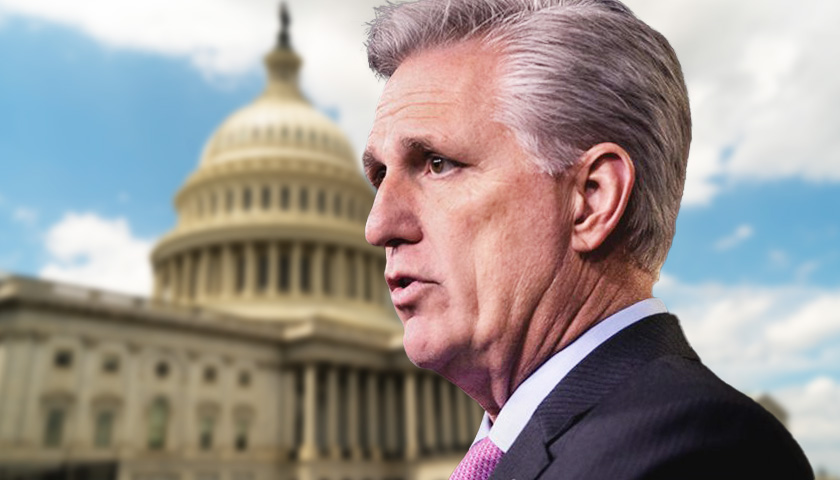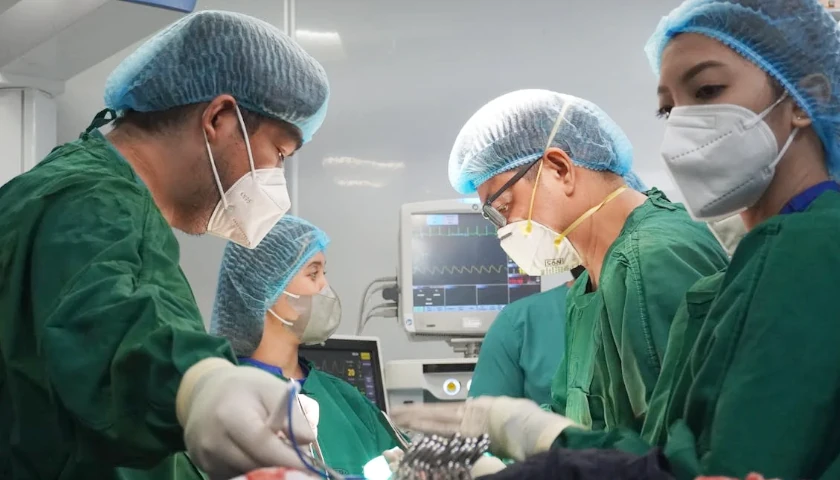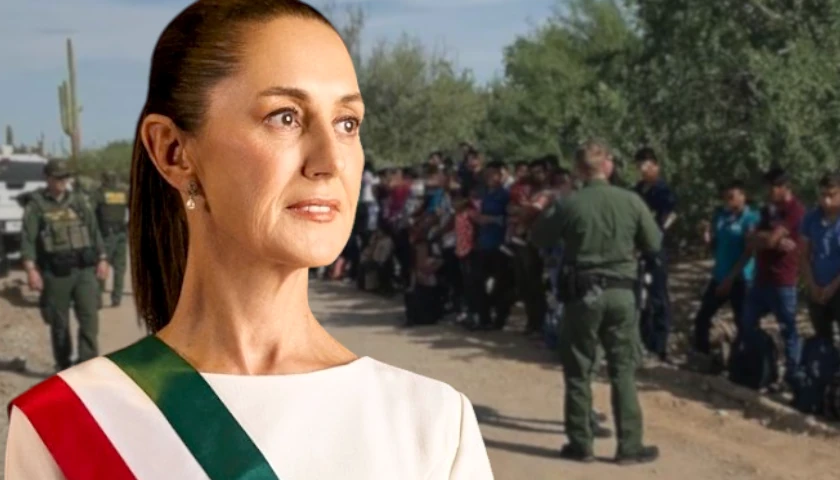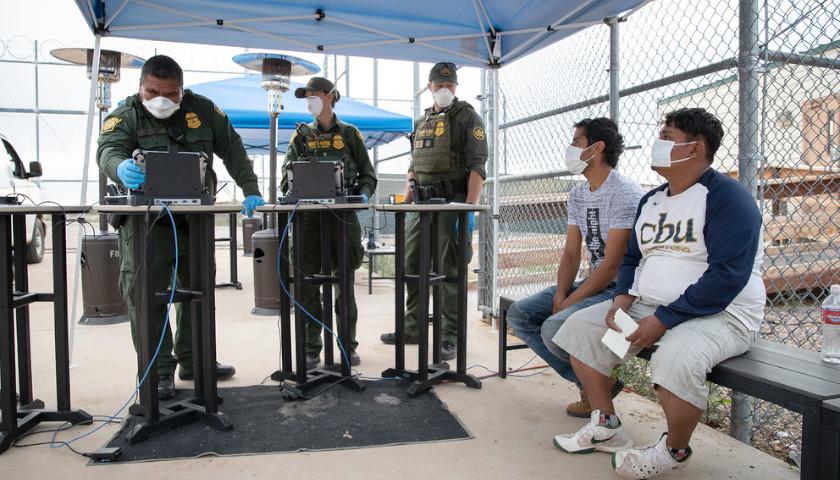by Robert Romano
House Speaker Kevin McCarthy (R-Calif.) and the House Republican majority have unveiled their spending plan for the next decade, the Limit, Save, Grow Act, that will be tied to a $1.5 trillion increase in the $31.4 trillion national debt ceiling, the centerpiece of which imposes discretionary budget caps beginning in 2024, but which will be set at 2022 levels, which could save more than $3.2 trillion over the next decade, according to an estimate by the Committee for a Responsible Federal Budget.
While an official score still has not come in from the Congressional Budget Office, the proposal stands out as a promise kept on McCarthy’s part to use the must-pass debt ceiling to restore some semblance of fiscal sanity to the out-of-control federal budget and national debt, the latter of which the White House Office of Management and Budget projects will rise to a gargantuan $50.7 trillion by 2033.
In 2011, former House Speaker John Boehner (R-Ohio) managed to negotiate a similar deal on discretionary spending caps with President Barack Obama — back then it was called Cut, Cap, Balance (although we never got the balance part) — which similarly reduced the budget deficit by hundreds of billions of dollars.
The last time it was done, budget sequestration brought discretionary spending outlays from $1.347 trillion in 2011 to $1.185 trillion in 2016. As a result, the budget deficit shrank from $1.3 trillion in 2011 to a more manageable $584.6 billion by 2016.
The difference back then was that so-called mandatory spending on Social Security, Medicare and Medicaid were at relatively stable levels—the Baby Boomers had not fully retired yet—and so discretionary spending caps could meaningfully reduce the actual budget deficit reported every year.
As it is now, mandatory spending plus net interest owed on the national debt is set to grow by about $3.1 trillion through 2033, from $4.6 trillion in 2023 to $7.7 trillion in 2033, nearly offsetting the discretionary spending caps proposal.
And so, Limit, Save, Grow would go even further, proposing another $1.3 trillion of spending cuts: $500 billion by prohibiting President Joe Biden’s plan to cancel student loan debt, $300 billion by rescinding green energy tax credits and remaining Covid spending, $100 billion by expanding work requirements for Medicaid and food stamps and $500 billion for less interest owed on the national debt thanks to the other spending cuts. The proposal would also eliminate the additional 87,000 IRS agents that were added to the federal workforce by Congress in 2022, which the Center for a Responsible Federal Budget reports would cut taxes by $100 billion.
All told, that’s $4.5 trillion of net spending reductions, and so when factored against the $3.5 trillion baseline increase of total spending, from the current $6.4 trillion in 2023 to $9.9 trillion, should result in deficit reduction of about $1 trillion. Again, we still need to see how the Congressional Budget Office scores the Limit, Save, Grow plan, but that should be in the ballpark, assuming Center for a Responsible Federal Budget’s projections were about accurate.
Now, attention will shift to Senate Republicans, who politically have the ability to either bolster or kneecap their House Republican counterparts on the debt ceiling. Will they be pointing to the dire fiscal outlook, with the national debt set to rise to $50.7 trillion by 2033 if something is not done?
Because in truth, that projection is based on a relatively favorable outlook, especially when you consider the $31.4 trillion national debt has grown on average 8.8 percent a year since 1980. If it keeps going at that rate—a recession or two, another war or two perhaps—it would hit $100 trillion by 2036 or 2037.
Whether $50 trillion or $100 trillion, who is going to buy all those treasuries? Foreigners have been reducing their holdings, and own a declining share of the national debt since the 2007-2009 financial crisis. In the Dec. 2008, foreign central banks and financial institutions owned $3 trillion out of the $9.9 trillion national debt, or 30.8 percent. In Jan. 2023, they owned $7.4 trillion out of the $31.4 trillion debt, or 23.5 percent.
The Federal Reserve has increased its share of the national debt by almost double. The Fed took its share of the debt from $790 billion in Aug. 2007 when the global financial crisis began, or 8.8 percent of the then $8.9 trillion national debt, to $5.28 trillion out of the $31.4 trillion debt as of April 2023, or 16.8 percent.
And then there’s financial institutions, retirement funds, mutual funds and so forth, the largest growing shareholder of the debt that will have to step in, with its share of treasuries rising from about 17 percent in 2008, or $1.7 trillion, to a massive $11.9 trillion, or 38 percent today.
The implication is bigger banks, much bigger banks that will demand a digital currency to avert bank runs as it takes on larger and larger swaths of U.S. treasuries, and a much larger financial system will be needed to accommodate this unprecedented growth of the national debt to offset declining ability to finance our deficits with foreign investment, and an incentive not to do it with outright printing of money by the Federal Reserve. Can you say inflation?
And that is the real danger, as the U.S. economy faces a combination of both inflationary and deflationary forces, with a labor force that shrinks as Baby Boomers retire, resulting in labor shortages but also weaker demand.
Massive monetary accommodations by the Federal Reserve to, for example, shore up the banking system over the next few years could dramatically increase the monetary base again depending on how bad the expected downturn in labor markets is — the Federal Reserve expects 4.6 percent unemployment in 2024, an implied 2 million jobs lost — could result in rising inflation again, which will mean higher interest rates, which will mean all the government’s budget projections were all off. Bet on it.
Meaning, with unemployment still very low at 3.5 percent, Limit, Save, Grow is the only game in town. Now is the time for Congress to do its best to get the fiscal house in order, before there’s another recession and deficits go up all by themselves as millions of jobs are lost and revenues plummet. It’s now or never.
– – –
Robert Romano is the Vice President of Public Policy at Americans for Limited Government.
Photo “Kevin McCarthy” by Kevin McCarthy. Background Photo “U.S. Capitol” by Thomas Lin.





